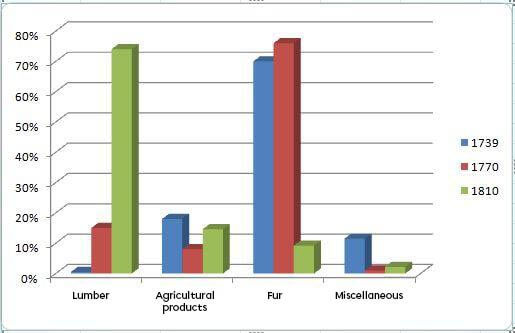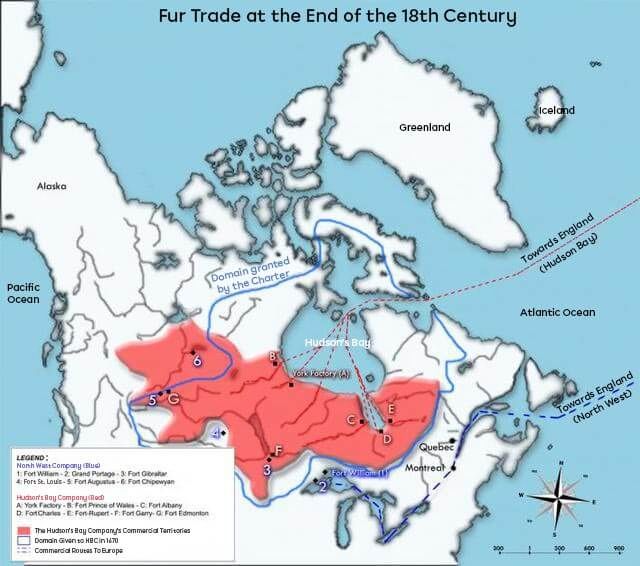The fur trade had been the most lucrative economic activity in North America since the days of New France. However, in the early 19th century, this trade experienced so much difficulty that it lost its place as the colony’s economic powerhouse.

Supply issues and a drop in the popularity of beaver fur in Europe were largely to blame for the downturn. The decline of the fur trade also affected Indigenous peoples, who gradually lost their role in the colony’s economy.
Beavers were becoming increasingly scarce in the Great Lakes region due to hunting, and companies were forced to constantly move west to get furs. As a result, companies expanded the territory they used for hunting, but this expansion came at a cost. New trading posts had to be built, additional labour had to be hired and goods were more expensive to transport.

For the North West Company and the Hudson’s Bay Company, the beaver fur trade became more and more expensive. Indigenous peoples took advantage of the competition between the two companies to sell their goods to whichever one offered the best price. This caused furs to become more expensive for buyers.
In the west, competition between the Hudson’s Bay Company and the North West Company was fierce and sometimes led to fighting. This rivalry harmed both businesses. Finally, in 1821, experiencing a great deal of pressure from the colonial government, the two companies merged under the name of the Hudson’s Bay Company. The Company was given a monopoly on the fur trade in a huge territory that reached from eastern Canada to the North-Western Territories.
With the fur trade moving westward, furs were shipped to the United Kingdom from Hudson’s Bay rather than the Port of Montreal.
With no competition between companies, Indigenous peoples were in the unfavourable position of having to sell their furs at a lower price. Because they earned less, they became poorer. Some were even forced to abandon their traditional way of life to trade more, greatly increasing their dependence on European products for their survival.